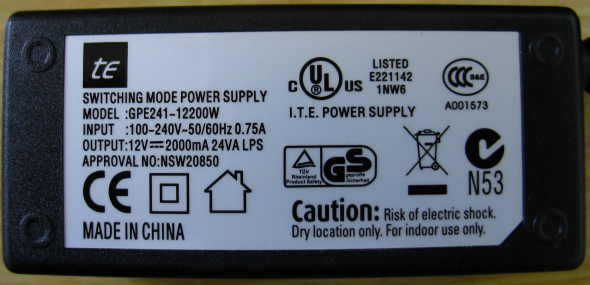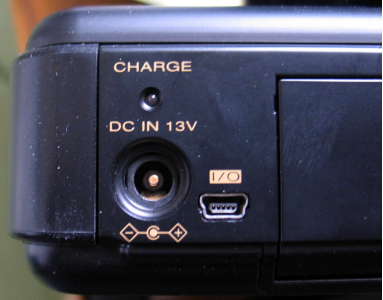OK, we’ve got together all the equipment that we want to use. Now we need to estimate the power consumption of these devices so that we purchase the right size of solar panel and battery. This also applies to portable generators too, which can be a good source of power…if its an option.
First of all …and I promise this will be brief… a quick look at the wonderful world of electricity. The idea here is to be able to get by, not to understand all the formal properties of electricity. There are some things that you must know to get by, in fact they might save you if something breaks and you need to improvise.
1. the most important feature of electricity: it’s dangerous! Be careful! …you have been warned. I’ll give you extra pointers for the stuff where you could really hurt yourself.
2. We’ll be dealing with AC and DC power. Roughly speaking AC comes from your wall socket or a generator, DC comes from a battery and sometimes from a generator.
3. Apart from addition, here is the only maths formula I’ll be talking about: watts = volts x amps. So…
4. Watt Hours is a measure of how much power you have. Using (3) you can divide the watts by the volts to get Amp Hours which is what I like to use with a battery system.
So, that’s it for now.
Here is an example of what a typical power adapter looks like:

You probably have heaps of these. Practically every bit of equipment you have will have one. This will take AC power and convert it to 12V DC. The output amps (2000mA or 2Amps) indicates what the adapter is capable of, not what is actually used.
This is a rough guide, so we’ll definitely be overestimating power usage… so 2 amps will do. The point where you plug the power into the equipment might also have some information, like this:

This is probably more useful and accurate if available. The manual for the device might have power consumption information too, and this will be the most accurate. You may find that there is an acceptable range of voltage which the device can operate within (if its around 12 volts then it was probably designed for use with a 12 volt battery).
Before I go any further I’ll roughly describe our power system: first we have the charging source, which could be a solar panel or a generator of some kind. This connects to and charges our battery, which will act as a reservoir for our power. When then hook up our equipment to this reservoir to power our other equipment.
Why do we use a reservoir? Easy, because you probably want to work at night! Because it might be overcast for several days in a row, or, in the case of a generator, you don’t want to hear it in your recordings (amongst other reasons). I’ll flesh this system out in the next post, but for now, we’re drawing power from a battery, which is a 12 volt DC power source.
This means that if our equipment takes as an input something other than 12 volt DC, we’ll have to use a convertor of some kind.
If a piece of equipment only runs on AC then you’ll need an inverter. This will convert the power from 12 volt DC to ~220 Volt AC. To figure out the size of the inverter, you need to figure out the maximum wattage that you’ll need at any given time. So if you want to plug in a 100W TV and two 40W light globes at the same time, you need an inverter that can do at least 180W. Jaycar or Dick Smiths are two places where you can purchase these. If you can avoid it though, its much better to get equipment that runs on DC. The conversion to AC does waste a bit of power, and you’ll probably have to carry in more adapters (which can really add up in weight!). Not to mention that many of these adapters then convert the power back to DC power!
If a piece of equipment is DC, then things are a little different. If you’re dealing with a voltage other than 12v you’ll need to step-down (or maybe up) to that voltage. If you have a car plug adapter for your device then you don’t need to worry about this, but if you bought a multi-adapter like the one I mentioned in my last post, you need to make sure it matches the voltage, and is capable of supplying the necessary amps for your device too. Laptop adapters will often need a lot of amps for instance. The adapter I show above outputs 2 amps which is quite a lot, so make sure the adapter you purchase is capable of this.
In the tip of the car adapter (and usually within your inverter too) you’ll find little glass fuses. Usually you just unscrew the end. Be sure to get a few spares at Jaycar or similar, in case they blow while you’re in the middle of nowhere. Its important you know which fuse goes with which adapter too, the wrong fuse could result in your equipment being destroyed, or may burnout if its too weak leaving you with no adapter!
Finally, to roughly work out the power consumption of your equipment:
1. Figure out the watts consumed by each device (watts = volts x amps)
2. multiply that number by the number of hours you estimate you’ll need the device each day.
3. Add them all together!
This wont be very accurate, so double it for a rainy day (or triple it if you’re extra cautious) and that’s the number of “watt hours” you’ll need each day. Your reservoir (battery) must be big enough to supply that for a couple of days (in case it rains) and your charging method (either solar panel, or generator) must be able to supply that amount of power in half a day. Keep these numbers in mind for the next post.
Choosing a panel and battery will be the next topic.
 Follow
Follow
Thanks for your useful post on solar power in field. I expect “20% of energy source will be solar in 2020”
[AW Imported from old site, sorry about the gravatar.]
I have a solar charger. I purchased it for traveling purpose. Seriously it helped me a lot to charge my Cell phone, laptop..solar chargers are best for traveling.